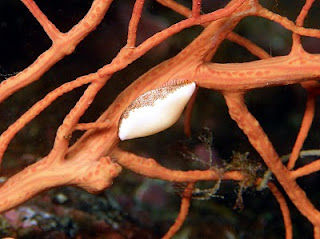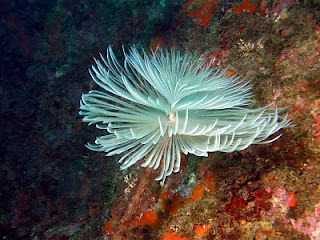 Este hermoso animal es un gusano marino del Tipo Platelmintos (gusanos planos o planarias) y concretamente de la clase turbelarios.
Este hermoso animal es un gusano marino del Tipo Platelmintos (gusanos planos o planarias) y concretamente de la clase turbelarios. Se caracterizan por su simplicidad, pues tienen un intestino simple o ramificado pero cerrado al exterior. La boca es inferior y evaginable. Esta especie se alimenta de Clavelinas, que son las ascidias transparentes que la acompañan en la fotografía.
El nombre del género (Prostheceraeus) significa antenas hacia delante. Tiene un cuerpo ahusado y se desplaza o bien mediante la capa de microcilios que tapiza su cara inferior o bien por contracciones de las fibras musculares que producen esas ondulaciones características de los bordes del cuerpo.










































 Such beauty is hard to find on land. Being here I feel like I am witnessing the beginning of Life on our blue planet, the dawn of time. It´s an experience not to be missed.
Such beauty is hard to find on land. Being here I feel like I am witnessing the beginning of Life on our blue planet, the dawn of time. It´s an experience not to be missed.




